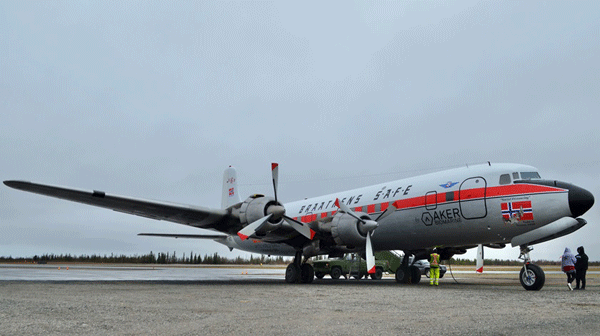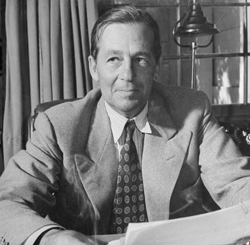|
The most colorful and truly unusual Cargo
In Cabin (CIC) movement of this COVID-19 era occurred when Norway’s
Thomas Waerner and his sled dogs won the world-famous Iditarod Trail Sled
Dog Race on March 18.
Thomas, who won the grand prize of $51000.00
and a new truck and the great honor of topping the rugged sled dog race
across the wilds of Alaska, packed himself and his winning team up, and
all hitched a ride home aboard a former Everts Air Cargo DC-6 converted
back to passenger configuration. That was a 50-hour (lapsed time) flight
via Yellowknife, Canada as the aircraft was ferried back to where it first
served as a line passenger aircraft and flag carrier for the legendary
Norwegian Braathen’s Safe Airlines.
The trip back home brought the ancient aircraft
from front line cargo service at Everts Air Cargo in Alaska to a permanent
home at Flyhistorik Flight Museum in Sola.
 |
Everts replaced the pax windows in the
aircraft and the original Braathen livery, but the interesting thing here
is that once the conversion was completed the aircraft like so many others
at work right now for airlines around the world was pressed into “cargo
only” use.
Everts, it should be mentioned, is the legendary
old-time all-cargo airline, based in Anchorage that is a true lifeline
for scores of communities. The company operates a mixed fleet of vintage
C-46 Avgas guzzlers and newer generation kero-powered aircraft.
MD-88s MD-90s in U.S. Say Goodbye
Today Everts Air Cargo in a “modernizing
mode” operates an MD-88 in cargo configuration.
The MD-88 aircraft and its series of twinjets
were in the news elsewhere recently.
In the U.S. hundreds of these aircraft have left service at American and
Delta in less than a year.
Delta operated the world’s largest
fleet of MD-88s and newer reincarnations of what was once simply called
the DC-9.
Delta dumped its entire fleet of the type,
or more than 185 aircraft of that series.
Delta said coronavirus did that aircraft
in, and that may be true. But what has happened to Delta could also equally
be about the size of the airline fleet.
The MD series MD-88/90 and DC-9 dated back
to the 1960s.
Since last September, with the retirement
of the last American Airlines MD-88s, the world market for used aircraft
of the entire MD series must total 400 units.
The twinjet could be the backbone of a new
passenger airline, or alternatively converted to cargo as a good option
for enterprising air cargo carriers. The secret of that aircraft’s
longevity has to do with the brilliantly thought out design of the aircraft
and its two engine configuration as compared to B727’s trijet.
Today two updated jet engines pushing you
skyward are always better than three.
Donald Douglas Lent A Hand
 Don’t
forget Donald Douglas, whose DC-3 taught the world how to fly. Douglas
was still alive, kicking ass and taking names when both the DC-8 and DC-9
were created. Douglas, an absolute genius waited and worked on the DC-8
passenger jet development to compete with the B707 and then some years
after the B727 rushed into market, Douglas delivered the DC-9. Don’t
forget Donald Douglas, whose DC-3 taught the world how to fly. Douglas
was still alive, kicking ass and taking names when both the DC-8 and DC-9
were created. Douglas, an absolute genius waited and worked on the DC-8
passenger jet development to compete with the B707 and then some years
after the B727 rushed into market, Douglas delivered the DC-9.
In both cases the DC-8 and DC-9 are acknowledged
as better aircraft than the B707 and B727. The proof of that is whilst
the Boeing 707 and 727 no longer fly schedules anywhere, there are multiples
of scheduled MD-80, 88/90s and DC-8s (cargo), which first came out during
the same era as the Boeings, still in service today around the world.
Geoffrey
|




